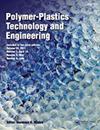Review on Three-Dimensionally Emulated Fiber-Embedded Lactic Acid Polymer Composites: Opportunities in Engineering Sector
Q2 Materials Science
引用次数: 35
Abstract
ABSTRACT The proficiency to three-dimensional (3D) interweaves engineering complex structures enables component engineering with heterogeneous geometries, attributing mechanically robust lightweight cellular structures. 3D printing proffers versatile contingencies toward the single-step engineering of near-net heterogeneous 3D structure for engineering application. For enhancing the current spectrum of 3D printing technologies and rising concern toward environmental issues, 3D printing of bioactive polylactic acid is extensively exploited owing to its biodegradability and renewable aspects. Synchronously, curiosity for 3D printed composites through fiber infusion has led to the configuration of high-performance composites with augmented mechanical, physical, and chemical attributes, paving its way for wide-array engineering applications. GRAPHICAL ABSTRACT三维仿真纤维嵌入乳酸聚合物复合材料的研究进展:在工程领域的机遇
对三维(3D)交织工程复杂结构的熟练掌握使部件工程具有异质几何形状,赋予机械坚固的轻质细胞结构。3D打印为工程应用的近网络异构3D结构的单步工程提供了多种可能性。为了提高当前3D打印技术的应用范围和人们对环境问题的日益关注,生物活性聚乳酸的生物可降解性和可再生性被广泛应用于3D打印。与此同时,人们对3D打印复合材料的好奇心通过纤维注入导致了高性能复合材料的配置,具有增强的机械、物理和化学属性,为广泛的工程应用铺平了道路。图形抽象
本文章由计算机程序翻译,如有差异,请以英文原文为准。
求助全文
约1分钟内获得全文
求助全文
来源期刊

Polymer-Plastics Technology and Engineering
工程技术-高分子科学
CiteScore
1.71
自引率
0.00%
发文量
0
审稿时长
4 months
 求助内容:
求助内容: 应助结果提醒方式:
应助结果提醒方式:


